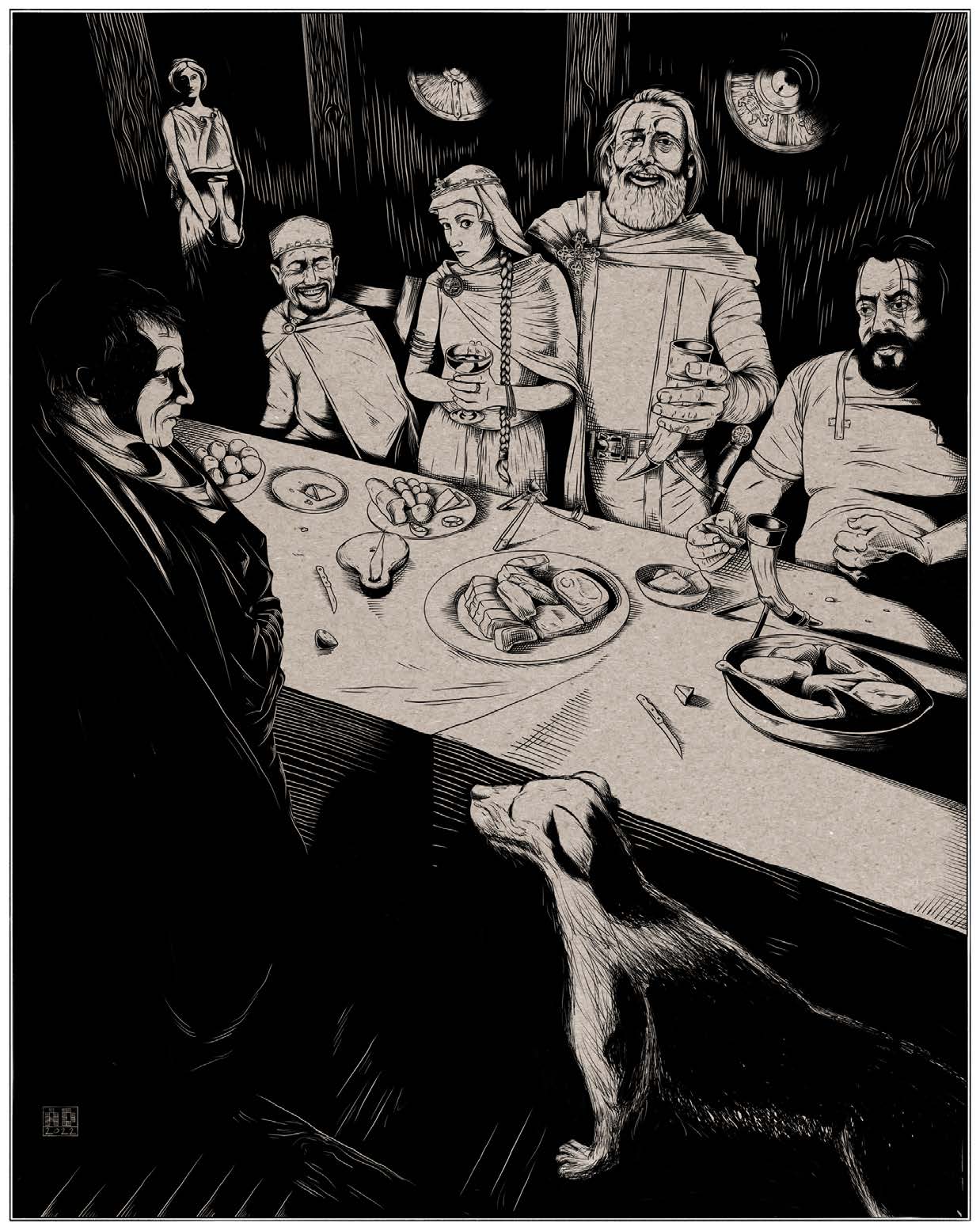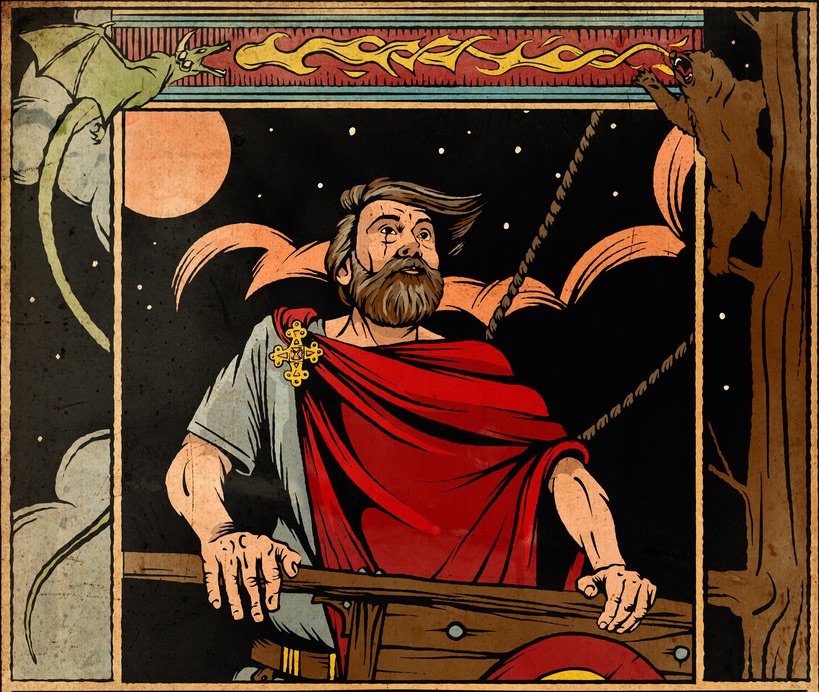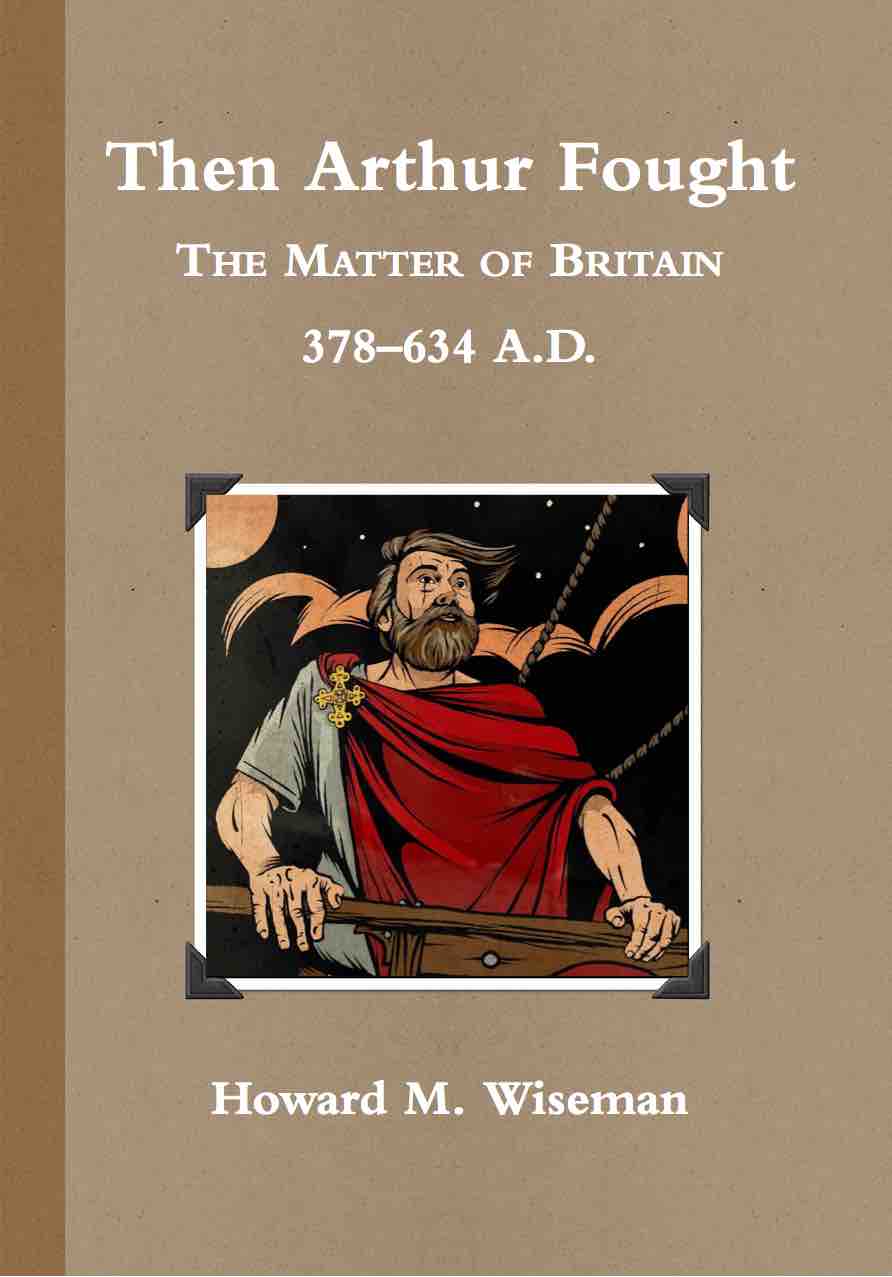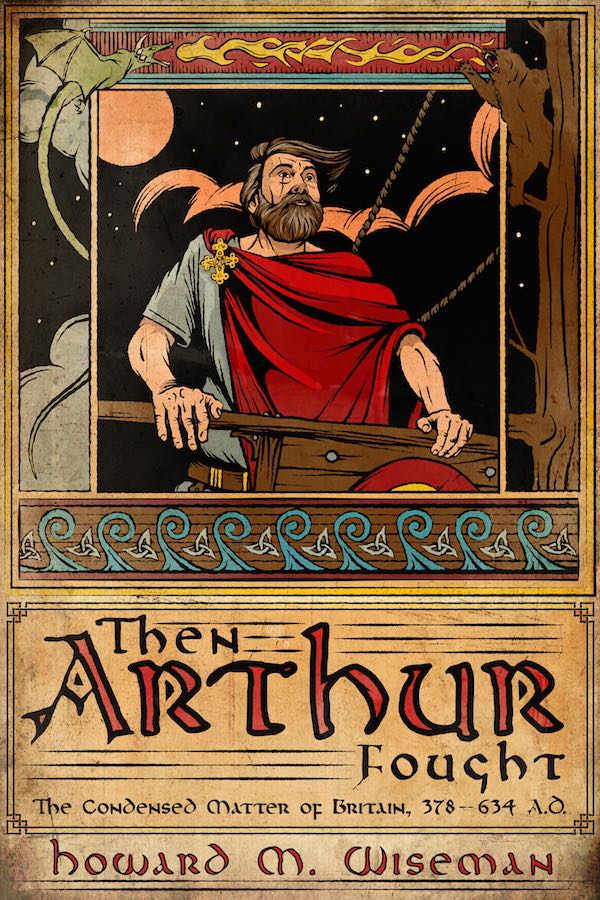A thoroughly convincing contemporary Arthurian document, a long and lavishly detailed fictional fantasia on the kind of primary source we will never have for the Age of Arthur. The whole thing should not work, should fall flat as the driest possible scholarly parlor-game -- and yet the thing is soaringly intelligent and, most surprising of all, hugely entertaining.
It is a stunning achievement, enthusiastically recommended.
-- from the
Editor's Choice review by Steve Donoghue, Historical Novel Society Indie Reviews Editor.

Number 5: Then Arthur Fought by Howard M. Wiseman. ... [a] crackerjack novel ... that's rooted firmly in historical fact. The result is like no work of Arthurian fiction ever written ... a genuinely exciting variation on "counter-factual" alternate narrative, a straight-faced but incredibly readable historical reconstruction of an Arthur who never in fact existed -- but one you'll end up wishing really had existed, thanks to Wiseman's understated artistry.
-- from
SteveRead's Best Historical Fiction of 2016 by Steve Donoghue.
 Then Arthur Fought is an extraordinary achievement. ... An absorbing introduction to the history and legends of the period [and] ... a fascinating synthesis.
Then Arthur Fought is an extraordinary achievement. ... An absorbing introduction to the history and legends of the period [and] ... a fascinating synthesis.
-- from the Foreword by Patrick McCormack, author of the
Albion trilogy.
Then Arthur Fought is unique. ... Wiseman has done a remarkable thing: he has taken the disparate materials of the Matter [of Britain] and recast it into a coherent whole.
... The list of sources of all kinds is stunning in its number; the book is worth having for that alone.
-- review in the
blog
of Prof. Erik Hildinger, author of histories and historical fiction.
Download an excerpt for free
Bonus material: Chronological List of Battles 367-658
Then Arthur Fought page on Facebook
Purchasing options
(*) The epub file purchased from Payhip can be exported to iBooks, or to a Nook device or app, or to other e-readers.


 Before the King Arthur of medieval Romance,
Before the King Arthur of medieval Romance,
 there was, quite possibly, an historical Arthur, battle-leader ofthe dark-age (5th/6th century) Britons. But between the two was the Arthur of pseudohistory, above all the infamous History of the Kings of Britain, published by Geoffrey of Monmouth in 1137. Although presented, and accepted for centuries, as history, Geoffrey's book is rightly described as a pseudohistory (false history) because of its anachronisms, hyperbole, and blatant contradictions of more reliable chronicles. In Then Arthur Fought, Howard Wiseman recasts the fictional history of Arthur as something new: a quasihistory (as-if-it-were history). This is a plausible chronicle, written in the medieval style, but compatible with firmly established history.
there was, quite possibly, an historical Arthur, battle-leader ofthe dark-age (5th/6th century) Britons. But between the two was the Arthur of pseudohistory, above all the infamous History of the Kings of Britain, published by Geoffrey of Monmouth in 1137. Although presented, and accepted for centuries, as history, Geoffrey's book is rightly described as a pseudohistory (false history) because of its anachronisms, hyperbole, and blatant contradictions of more reliable chronicles. In Then Arthur Fought, Howard Wiseman recasts the fictional history of Arthur as something new: a quasihistory (as-if-it-were history). This is a plausible chronicle, written in the medieval style, but compatible with firmly established history. 

 Then Arthur Fought is an extraordinary achievement. ... An absorbing introduction to the history and legends of the period [and] ... a fascinating synthesis.
Then Arthur Fought is an extraordinary achievement. ... An absorbing introduction to the history and legends of the period [and] ... a fascinating synthesis.